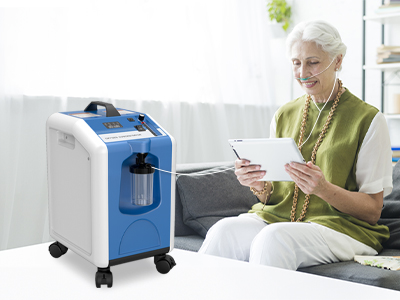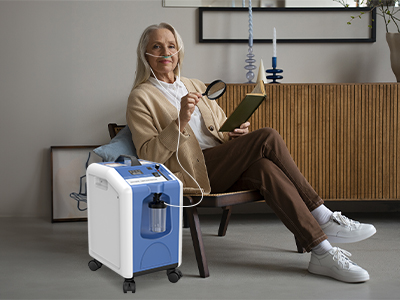18 Aug 2023
As a respiratory aid, an oxygen concentrators plays a pivotal role in improving the quality of life for individuals with respiratory conditions. Whether you're navigating the challenges of chronic obstructive pulmonary disease (COPD), asthma, or other lung-related issues, understanding how to maximize the benefits of your oxygen concentrator can significantly enhance your overall well-being.
Understanding Oxygen Concentrators
At its core, an oxygen concentrator is a medical device designed to deliver a concentrated flow of oxygen to individuals who have difficulty breathing on their own. This sophisticated piece of equipment utilizes advanced technology to extract and purify oxygen from the surrounding air, ensuring a consistent and reliable source of supplemental oxygen.
Factors Affecting Oxygen Concentrator Performance
While oxygen concentrators are engineered to deliver consistent oxygen levels, external factors can impact their performance. Temperature and humidity, for instance, can influence the concentration process. It's crucial to keep the concentrator in a controlled environment to maintain optimal functionality. Additionally, if you reside in a high-altitude location, it's important to understand that oxygen levels in the atmosphere naturally decrease at higher elevations. Your healthcare provider can help you adjust your concentrator settings accordingly.

Maintenance and Care
Like any medical equipment, regular maintenance is essential to ensure the longevity and efficacy of your oxygen concentrator. Cleaning the device and its components on a routine basis prevents dust and debris buildup, which can impede oxygen flow. Follow the manufacturer's guidelines for cleaning filters, and replace them as recommended. Keep the area around the concentrator free from clutter to facilitate proper air circulation.
Optimal Placement and Usage
Placing your oxygen concentrator in the right location is crucial for its effective operation. Ensure that it's positioned in a well-ventilated area, away from walls or furniture that could block air intake or output. Keep a safe distance from curtains and other flammable materials. When using the concentrator, avoid placing it too far from where you spend the most time, as the tubing's length can affect oxygen delivery.

Breathing Techniques and Oxygen Consumption
Incorporating proper breathing techniques can significantly enhance the benefits of oxygen therapy. Deep breathing exercises can help you fully expand your lungs, allowing for better oxygen exchange. Pursed-lip breathing, characterized by inhaling through the nose and exhaling slowly through pursed lips, helps prevent the collapse of small airways, allowing more oxygen to reach your lungs.
Supplemental Strategies for Maximized Benefits
Maximizing the advantages of your oxygen concentrator goes beyond its usage. Staying well-hydrated is essential for maintaining healthy lung function. Regular exercise, as recommended by your healthcare provider, can strengthen your respiratory muscles and improve lung capacity. Additionally, adopting a balanced and nutritious diet rich in antioxidants supports overall respiratory health.
Monitoring and Adjustments
Regularly monitoring your oxygen saturation levels using a pulse oximeter is key to ensuring you're receiving the appropriate amount of oxygen. Your healthcare provider will establish target saturation levels and adjust your concentrator settings accordingly. If you experience changes in your breathing patterns or symptoms, consult your healthcare professional promptly.
Conclusion
Mastering how to maximize your oxygen concentrator's benefits is a journey toward improved respiratory well-being. By understanding its mechanics, practicing proper maintenance, optimizing its placement, and adopting complementary lifestyle choices, you empower yourself to breathe easier and enjoy a more fulfilling life despite respiratory challenges. Your oxygen concentrator isn't just a medical device; it's a tool for empowerment on your path to better health.
Keywords: oxygen concentrator
Originally published 18 Aug 2023, updated 18 Aug 2023.